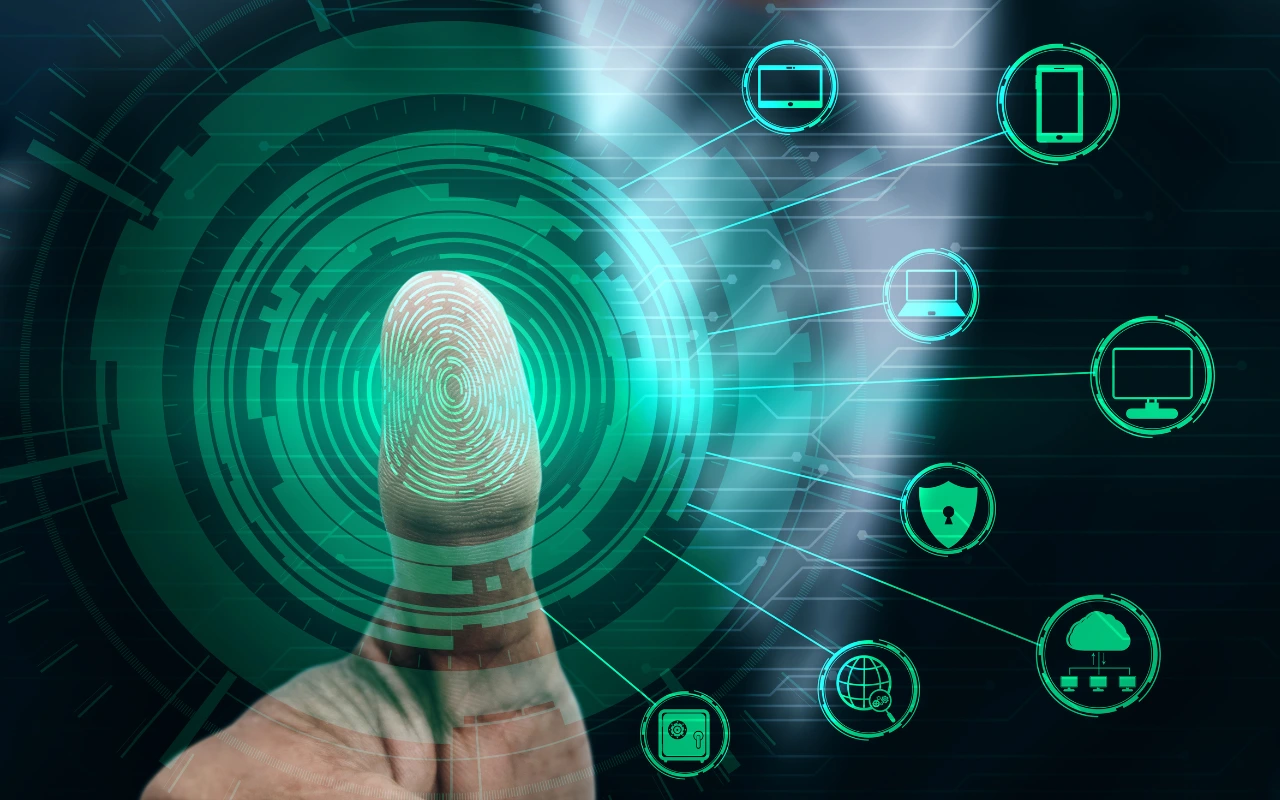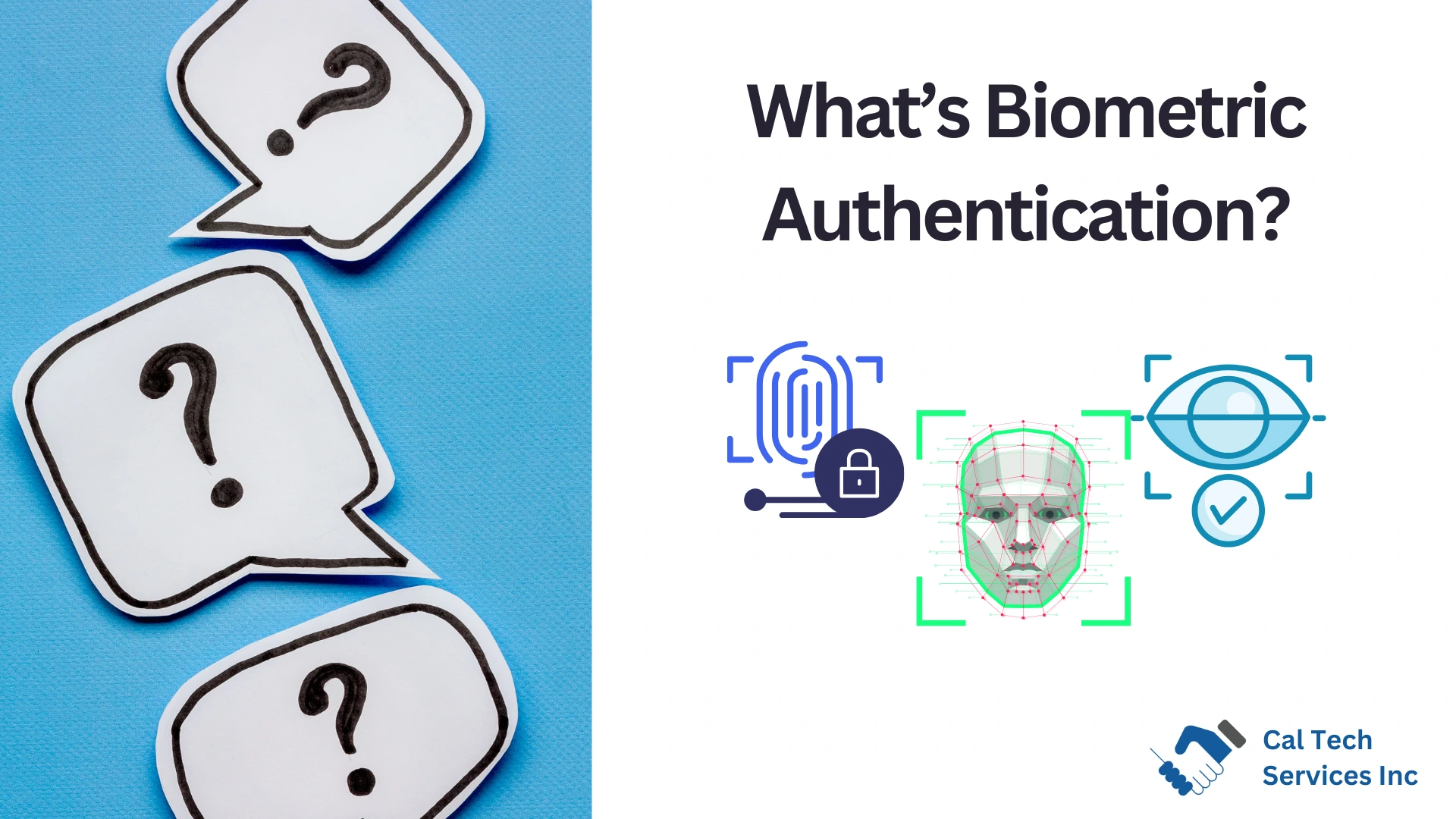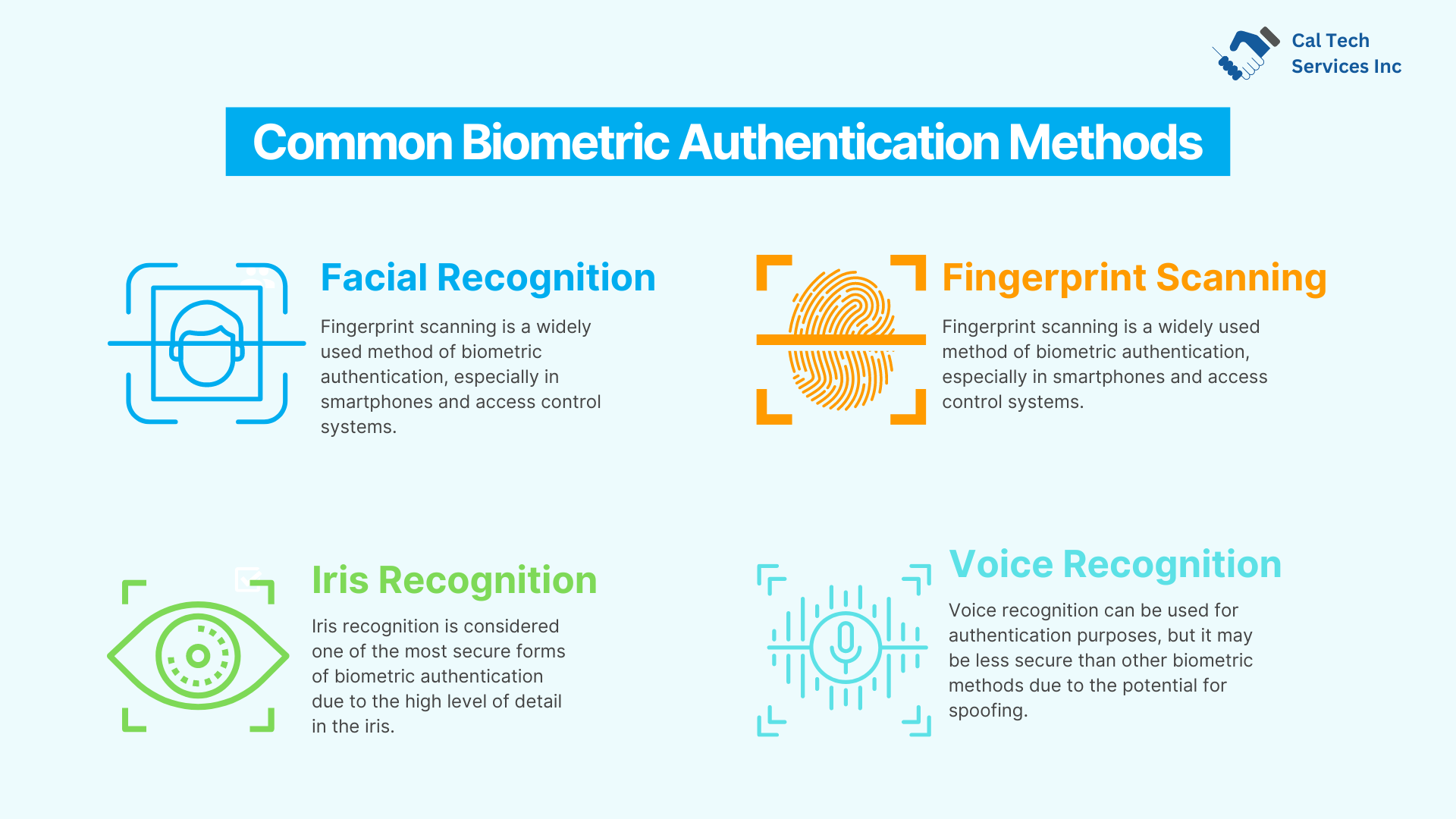
What is Biometric Access Control?
Picture this: you walk up to a door, look at a camera, and it swings open. No keys, no cards, just you. That’s the power of biometric access control. It’s a technology that uses your unique physical features, like your fingerprint or facial recognition, to unlock doors, access devices, and protect sensitive information.
Biometric authentication has been around for decades, with early examples dating back to ancient civilizations. However, it wasn’t until the development of advanced sensors and computer technology that biometrics became a practical and widespread security solution.
In this article, we’ll enter the world of biometric access control. We’ll explore its advantages, the potential risks, and the different types of biometric authentication methods. So, let’s get started!
Understanding Biometric Authentication

As detailed in thr introduction, biometric authentication is a security method that uses unique human characteristics to verify identity. It woks by capturing a biometric trait such as fingerprint, facial feature, or iris pattern, and comparing it to a stored template. If there’s a match, access is granted.
Biometric data is considered highly secure because it’s difficult to replicate or forge. Unlike passwords, which can be compromised through hacking or phishing, biometric traits are unique to each individual. This makes them a reliable and effective way to verify identify.
The accuracy and reliability of biometric authentication depends on the quality of the biometric data collected and the sophistication of the matching algorithms used. In the following section, we’ll discuss the benefits of biometric access control and how i can enhance security and convenience in various applications.
Benefits of Biometric Access Control
Biometric access control offers several significant benefits over traditional authentication methods like passwords or access cards. Here are some of the key advantages.
Enhanced Security
Biometric data is highly unique to each individual, making it difficult to compromise or replicate. This reduces the risk of unauthorized access and helps protect sensitive information.
Increased Convenience
Biometric authentication eliminates he need to remember complex passwords or carry physical tokens like keys or cards. This can be especially beneficial in situations where individuals have multiple accounts or need frequent access to secured areas.
Improved Efficiency
Biometric systems can automate the authentication process, reducing the time and effort required for security checks. This can improve operational efficiency and productivity, particularly in high-traffic environments.
Enhanced User Experience
Biometric authentication can provide a more seamless and user-friendly experience for authorized individuals. By eliminating the need for multiple login steps, it can streamline access to resources and services.
Although biometric access control offers many benefits, it’s not without its risks. In the next section, well go through the potential downsides and challenges that come with using biometric data.
Risks Associated wih Biometric Authentication
While biometric access control offers numerous advantages, it’s essential to consider the potential risks associated with its implementation. One of the primary concerns is privacy. Biometric data is highly personal and can be difficult to revoke or change once it’s collected. There’s a risk that this data could be compromised through breaches or unauthorized access, leading to identity theft or other malicious activities.
Another challenge is the potential for unauthorized access. While biometric systems are designed to be secure, there’s always a risk of spoofing or circumventing the authentication process. FOr example, hackers may attempt to create fake fingerprints of facial images to gain access to restricted areas.
Additionally, biometric systems have limitations. They may no be equally accurate for all individuals, particularly those with certain physical conditions or disabilities. There’s also a risk of false positives or negatives, which can lead to inconvenience or security breaches.
It’s important to carefully consider these risks when implementing biometric access control and to take appropriate measures to protect biometric data and prevent unauthorized access.
Common Biometric Authentication Methods

There are several common biometric traits used for authentication. Some of the most popular methods include,
-
Facial Recognition: Capturing a person’s facial image and comparing it to a stored template. Facial recognition systems can be used in a variety of settings, from smartphones to security cameras.
-
Fingerprint Scanning: Capturing a person’s fingerprint and comparing it to a stored template. Fingerprint scanning is a widely used method of biometric authentication, especially in smartphones and access control systems.
-
Iris Recognition: Capturing the unique patterns in a person’s iris and comparing it to a stored template. Iris recognition is considered one of the most secure forms of biometric authentication due to the high level of detail in the iris.
-
Voice Recognition: Capturing a voice of someone and comparing it to a stored template. Voice recognition can be used for authentication purposes, but it may be less secure than other biometric methods due to the potential for spoofing.
Each of these biometric methods has its own advantages and disadvantages. The best method for a particular application will depend on factors such as accuracy, cost, and ease of use.
Implementing a Biometric Access Control System
Implementing a biometric access control system involves several key steps.
Step 01 - Needs Assessment
Determine the specific requirements for your biometric system, such as the types of biometric traits o be used, the number of users, and the level of security needed.
Step 02 - Hardware and Software Selection
Choose appropriate hardware and software components, including biometric sensors. access control devices, and authentication software.
Step 03 - Data Collection and Enrollment
Collect biometric data from authorized users and create corresponding templates for comparison.
Step 04 - System Integration
Integrate the biometric system with existing security infrastructure, such as security cameras or alarm systems.
Step 05 - Testing and Training
Conduct thorough testing to ensure the system is functioning properly and provide training to users and administrators.
When integrating a biometric system with existing security measures, it’s important to consider factors such as compatibility, interoperability, and data privacy. It may be necessary to update existing software or hardware to ensure seamless integration.
To ensure successful deployment of a biometric access control system, it’s essential to follow best practices such as:
-
Choosing a reliable vendor - Select a reputable provider with a proven track record in biometric technology.
-
Regularly updating software and hardware - Keep your system up-to-date with the latest security patches and updates.
-
Enforcing strong security measures - Implement measures to protect biometric data and prevent unauthorized access, such as encryption and access controls.
-
Providing ongoing training - Educate users and administrators on the proper use of the biometric system and security best practices.
By following these guidelines, organizations can effectively implement biometric access control systems to enhance security and improve efficiency.
Comparison to Traditional Authentication Methods
Biometric authentication offers several advantages over traditional methods like passwords and access cards. Here’s a comparison,
Security
Biometric data is generally more difficult to compromise than passwords or access cards. Passwords can be easily forgotten, stolen, or guessed, while access cards can be lost or stolen.
Convenience
Biometric authentication eliminates the need to remember complex passwords or carry physical tokens. This can be especially convenient for individuals who have multiple accounts or need frequent access to secured areas.
Efficiency
Biometric systems can automate the authentication process, reducing the time and effort required for security checks. This can improve operational efficiency and productivity, particularly in high-traffic environments.
However, traditional authentication methods may still be suitable in certain situations. For example, passwords may be preferred for simple applications where a high level of security is not required. Access cards can also be a cost-effective option for organizations with limited budgets.
In many cases, a combination of biometric and traditional authentication methods can provide the best level of security. This approach, known as multi-factor authentication, requires users to provide multiple forms of identification to gain access. For example, a user might be required to enter a password, scan their fingerprint, and provide a security token.
Ultimately, the decision of whether to use biometric authentication or traditional methods will depend on the specific needs and requirements of an organization. By carefully considering the advantages and disadvantages of each approach, organizations can choose the most appropriate method to protect their assets and ensure the security of their operations.
Wrapping Up
Biometric access control has emerged as a powerful tool for enhancing security and convenience. By leveraging unique human characteristics, biometric authentication offers a more reliable and secure alternative to traditional methods like passwords and access cards.
In this article, we’ve explored the benefits of biometric authentication, including enhanced security, increased convenience, and improved efficiency. We’ve also discussed the potential risks associated with biometric data and the importance of implementing appropriate security measures.
As biometric technology continues to advance, we can expect to see even more innovative and secure applications. By understanding the advantages and challenges of biometric access control, organizations can make informed decisions about whether to adopt this technology and how to implement it effectively.
Are you ready to explore the benefits of biometric access control for your organization? Contact us today to learn more about our biometric solutions and how we can help you enhance security and improve efficiency.





